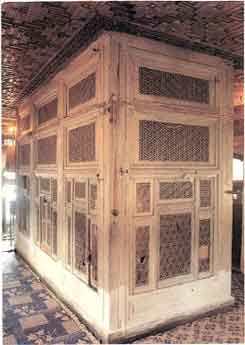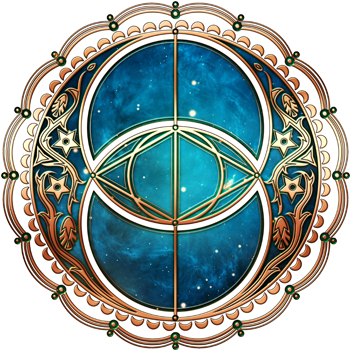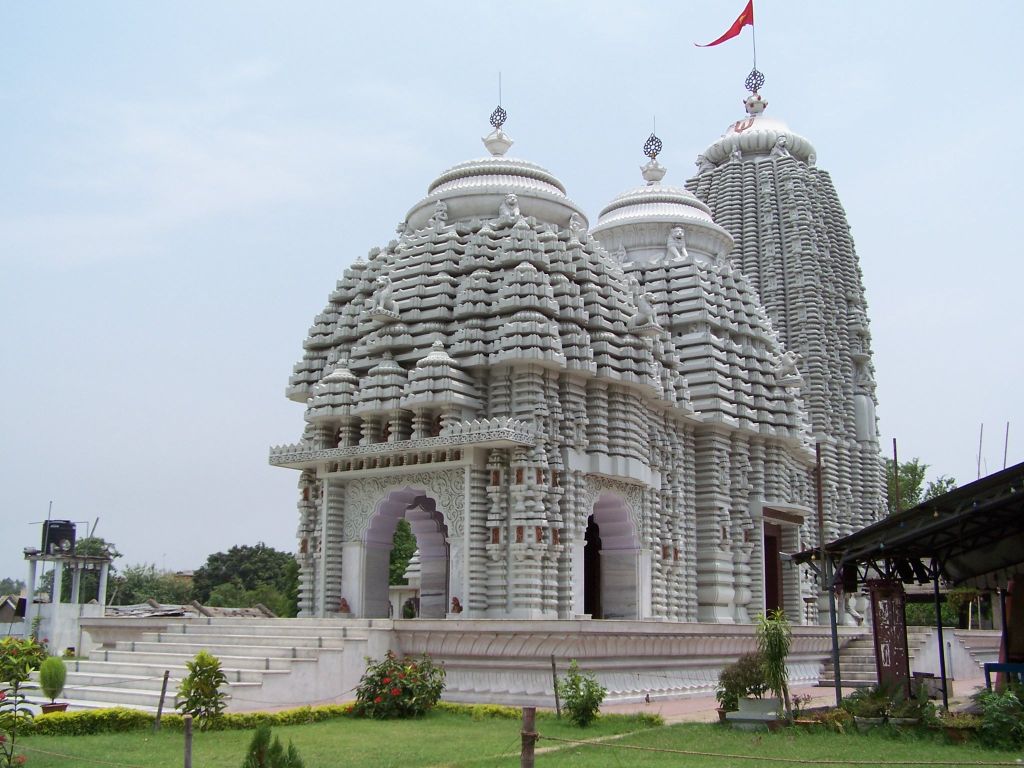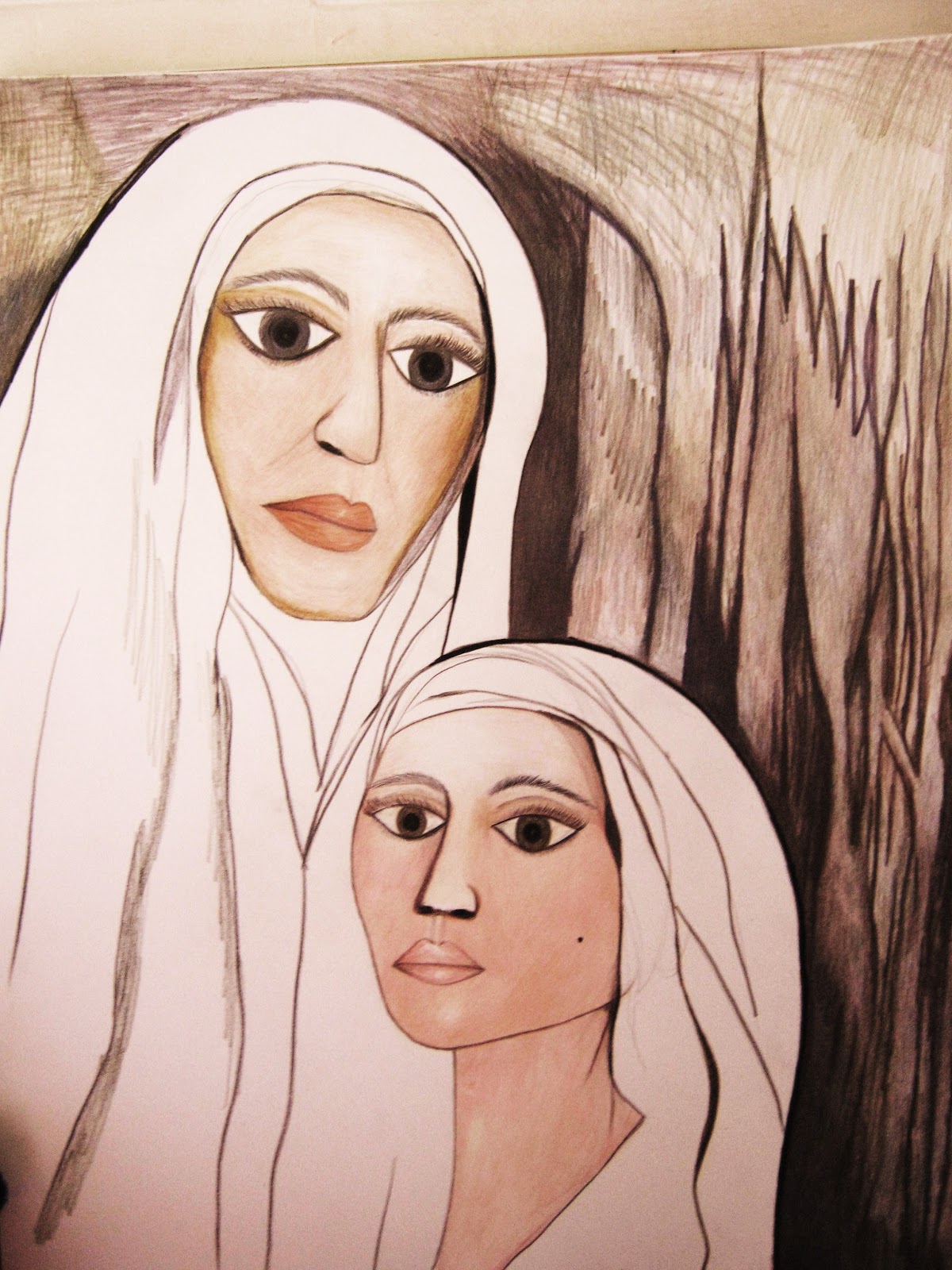Musings from ‘Magdalene Speaks’
by KRISHNA ROSE (Author of Woman in Red – Magdalene Speaks)Jesus After the Crucifixion-India-Evidence to Bridge Between East & West
“There are many written stories of people having met, touched, and heard from Jesus after the crucifixion, even in the Gospels it is so. ”
Did Jesus study Buddhism in Hemis? Evidence says so.
 oday it has become possible to assert that it is not possible to disprove Jesus’s stay in India, in view of the body of evidence India gives us. No historically reliable source, nor accounts in the Gospels, comment on the years of Jesus’s life between his 12th and 30th years. It is as if Jesus’ life began only after he turned 30!
oday it has become possible to assert that it is not possible to disprove Jesus’s stay in India, in view of the body of evidence India gives us. No historically reliable source, nor accounts in the Gospels, comment on the years of Jesus’s life between his 12th and 30th years. It is as if Jesus’ life began only after he turned 30!
And what of after the crucifixion? There are many written stories of people having met, touched, and heard from Jesus after the crucifixion, even in the Gospels it is so. He told the disbelieving Thomas, “here touch my wounds, and let us eat together so that you know I am not a ghost, but am real as you, or any of these men and women here.” Yet still today, people believe Jesus was raised only in spirit, not in body, and then disappeared off the face of the Earth.
Here is evidence of how Jesus would have survived his ordeal.
1. EVIDENCE – According to modern day doctors and forensic pathologists, it would take a man at least 24-48 hours to die from crucifixion. One would die a slow death, eventually ending in suffocation, as the lungs filled up with fluids.
FACT: Jesus, according to the Gospels, was upon the cross for 4 hours, crucified at high noon, brought down before sunset, due to impending Sabbath. When the sword pierced his side, liquid and blood came out. Blood/liquid does not move in a dead man.
2. EVIDENCE – To give a man who is condemned to death, wine and spiced herbs – such as myrrh (for pain) and poppy, for narcotic pain relief, was completely in accordance with Jewish custom. There is a plant known as swallow-wort, soma, celandine, asclepias acida or Master Herb also known as Jewish Herb. This was such a magical potion, that the mixture had the property of putting one into a cataleptic state resembling death. Best known example of this is within the story of Romeo and Juliet. This apparent death, is a comatose state resembling deep sleep, where all signs of life such as respiration, heart beat, and pulse, are no longer noticeable. It is perfectly feasible to presume that those who loved ‘the Messiah’ would try to save him in some manner such as this.
FACT: In the Talmud of the Jews, “he who went out to be executed, was given a small piece of incense in a beaker of wine, so that he might lose consciousness” (Sanh. 43a). It has been documented that Jesus was given a sponge from Joseph of Arimathea, to quench his thirst. It was after sucking upon this sponge that Jesus lost consciousness and was promptly brought down as the Sabbath was soon beginning, he was pronounced ‘dead’.
3. EVIDENCE – When Jesus was brought to the Sepulchre, it is documented that large jars of aloes and myrrh were brought into the burial chamber by Joseph of Arimathea for caring for Jesus’s body. Aloes are given to purge poison and to soothe inflammation, broken skin, rashes and wounds. Myrrh is given for pain. Why would these have been brought to a dead man?
4. FACT – Blood does not flow from a dead man, yet it is said blood and water flowed from Jesus’ side when he was speared between the ribs. If the Turin shroud is indeed the real thing, then the flowing blood upon the shroud proves that the man who was crucified, was still alive.
5. FACT: The Jews and Romans were expecting the Messiah to come. In scriptures, it was predicted that we would know him by these deeds:
1. He would heal the sick;
2. Cure the blind;
3. Raise the dead;
4. Preach to the wicked;
5. Be killed and would rise again on the 3rd day;
6. AFTER rising from death, the Messiah would go on to preach and unite the Lost Tribes of Judea.
EVIDENCE Many of the Lost Tribes of Judea were known to have settled in France, Persia and Kashmir,India. There is an enormous body of evidence that Jesus did indeed go in search of these Judean tribes after his crucifixion, which he survived. In fact, evidence reveals that he spent the remainder of his life in Srinagar, Kashmir, until his demise in his late seventies. His tomb is there in Srinagar, at the foothills of the Himalaya Mountain ranges, and for centuries has been worshipped by the local people as the tomb of the great Prophet / Messiah Issa Masshi (meaning supreme Lord and Messiah) where miraculous healings have happened.

Rozabal Tomb, Sringar Kashmir – the final resting place of Jesus, Ysha, Yeshua, Issa, Yuz
The tomb is known as the Rozabal Tomb and it points East to West as in Judaic traditional burial – rather than North to South, as the Muslim burial ritual dictate…”
The Muslim’s claim the tomb belongs to ‘their’ Prophet Yuz Asaf, which was a name given to Jesus when he visited Persia after the crucifixion. Yuz (Yesu, Yeshua, Jesu). Asaf means Messiah. His teachings are one and same. Identical in every way. The Prophet Yuz Asaf lived at the same time as Jesus, and followed the path from Judea to India after the crucifixion date. This same Prophet , after coming to India, was known as Isha, Issa or Ysha to the Indian people, who lived during his time. He was known as Yeshua to the Jews. He had been crucified by his own people (Judeans) and survived / raised from the dead on the 3rd day.
6. EVIDENCE – One such reference in India refers to Jesus’s and Thomas’s visit to the Courts of India, where they met with the local Kings of that period. At the Court of King Andrapa, on the wedding night of his daughter, the King showed Thomas into the bridal suite to preach to the young couple. After Thomas had prayed with the couple, everyone present left the bridal suite “but after everyone had left and the doors closed, the bridegroom raised the curtains in the bridal suite to join his bride, and there he saw Jesus speaking with his bride, resembling Thomas, who had just blessed them and left. The groom said to Jesus “did you not just leave? How did you leave and also stay at the same time?” Jesus replied “I am not Judas-Thomas, I am his brother Yeshua”. Jesus is documented to have then sat down on the bed asking them to sit down on the chairs before him, and told them “remember my children, what my brother said to you, and unto whom he recommended you…. I am he” (A.Th.8,11). There are hundreds of sources wherein conversations with Jesus took place, up and down India, where the scribes of the Maharaja’s (great King’s of India) wrote down these conversations and teachings extensively.
The power, influence and authority of the Christian/Catholic church was so strong, that the authenticity of canonical teachings dared not come into question. People who find great bodies of evidence proving ‘otherwise’, were condemned and damned as Godless heretics. Throughout history we can see, so many were tortured, killed, muzzled, ostracized and laughed out of society, for thinking outside of the box.
Such was the power of the Church over the mindset of the masses. However, God’s truth carries with it a great power which is unstoppable.”
In the Aquarian Gospel of Jesus, authored by the disciple Levi, there are numerous accounts of Jesus’s life in India, which correspond to the life of the Holy man known as Issa, and Yuz. According to this Gospel, the Indian Royal Prince Ravanna of Orissa, met the twelve year old boy known as Yeshua in a Temple in South India, where he hears him debate. Prince Ravanna, being impressed with this young Davidic Prince, brings Jesus (Yeshua) to the Temple of Jagannatha in Puri (Orissa) where he is accepted as a student, granting him an opportunity to deepen his studies of the ancient scriptures.
It is interesting to note that historians find no mention of Jesus, or his miracles, or the extraordinary events that surrounded his life, nor any mention of his childhood and adolescence, which are totally ignored in the known Gospels. In fact, even in the accounts given, regarding his famed public life, only a few hours and days of trials and teachings are given, for the full life of a man on Earth.
Yet the Christian world still disregards the collection of evidences surrounding Jesus’s life, which are outside of the world of the Church. Ernst Kasemann, a historian, who specialized in the New Testament, summarized the results of his research into the matter, by saying ”one is overwhelmed by how little of the accounts about Jesus’ life in the New Testament can be authenticated”. Theologian Bultmann continues “the character of Jesus, the clear picture of his personality and life, have faded beyond recognition.” Professor Fida Hassnain, who was a wealth of knowledge on the life of Jesus in Kashmir, was a Scholar of Indology and Archaeology from Kashmir India. He was Director of the Kashmir Research Center for Buddhist Studies and a member of the International Conference for Anthropological Research in Chicago. He is quoted here saying, “not until one establishes an irrefutable foundation for the historical facts of Jesus, will one be able to ascertain whether or not it is possible that he did live in India, survive crucifixion and did not depart to heaven on an ascension cloud, but rather returned to India and died at an old age. Without such a foundation, it is indeed hard to divert the current thinking pool of almost 2,000 years of deeply rooted tradition”.
One must examine all the evidence available if one is to make a fair assessment of the historical Jesus. Without examining all sides of the coin, one simply cannot believe that there in only one side of the coin, and it is the side that everyone has been believing for centuries past, based upon a few weeks of this man’s life written into a Scriptural Book, known as The Bible. Yet, indeed there is evidence that there is another side to this coin and to the life and person known as Jesus.
Moses lived and travelled in Kashmir. His Tomb and Rod (staff) still exists there today, worshipped and protected by the locals, for when the Exodus took place, in which the Israelites came out of slavery in Egypt, they went in search of the land of their forefathers. The blessed land which had been promised by God to their people – was this land “the land of plenty” Kashmir in India? “And the Lord said unto him – this is the land which I swore unto Abraham, Issac and Jacob saying, I will give unto your seed, I have caused thee to see it with thin eyes, but thou shalt not go over thither. So Moses the servant of the Lord died there in the land of Moab, according to the word of the Lord, and he buried him in a valley in the land of Moab, over against Beth-peor, but no man knoweth of his sepulchre unto this day” (Deuteronomy 34, 4-6).
The literal meaning of Beth-peor is “a place that opens” for instance a valley that opens out into a plain. The River Jhelum in the North of Kashmir is called “Behat”, and the small town of Bandipur where the valley of the Jhelum River opens out into the broad plain lake of Walar was once called Pehat-Poor. Beth-peor became Behat-poor, which is now Bandipur in the region of Tehsil Sopore, 80 kms south of Srinagar, the capital of the very beautiful land known as Kashmir. 18 kms northeast of Bandipur lies the small village of Hasba, or Hasbal, which is referred to as Heshbon in the Bible (Deuteronomy 4,46), and is mentioned in connection with Beth-peor and Pisga. On the cliffs of Pisga (now Pishnag) North of Bandipur and 1.5kms NE of the village Aham-Sharif, there is a famous spring, famous for it’s healing quality. The valley and plains are called the plains of Moab, ideal pasture land.
Indian scriptures known as The Vedas are certainly the oldest scriptures known to mankind. Therefore, it would seem logical, that accounts of the great flood of Noah would also be found in the Veda’s. The flood appears as a legend in Hindu scriptures:
“True to the predictions of the Lord, the Earth was populated by Man, and the progeny of Adamis and Hevas soon became so numerous and wicked that they were no longer able to live in peace with one another. They forgot God and even rebelled against Him. The Lord thereupon decided to punish His creatures in a manner to serve as an example for generations to come. He looked for the man most worthy of being saved for the preservation and continuation of the species. His choice was Vaivasvata, and he let him know his will. On the holy bank of the River Virim, Vaivasvata saved a small Fish that later proved to be an Avatar (incarnation of God). The Fish warned the just man that the end of the world was near, and that all of its inhabitants were doomed. God, in the form of the Fish, then ordered Vaivasvata to build a ship for himself, and his family. When the ship was ready, with the seeds of every plant, and pair of every species of animal, the big rains began, and the rivers flowed. Then a great Fish with a horn on His head placed itself at the bow of the ark, and the holy man fixed a sail to the horn. The Fish then pulled the ship safely through the furious elements, and the ship landed intact on the peaks of the HImalayas (cf. Genesis 6).
The number of days of the flood accords with the number in the accounts of Moses (40 days).The great flood, was said to have been in “Sint”, which is quite simply Sindh (the old name of the mighty river to which the entire subcontinent of India owes it’s name Indus). Sindh-Induas, is the most powerful river to be crossed in order to arrive in India. Running from North to South, if flows through India, Pakistan, Tibet, Mongolia, and West Iran into the formidable delta on into the Arabian Sea”. “The other side of the flood” Abraham’s place of origin, could certainly have been the land Kashmir.
Here are some amazing villages, tribes, regions, estates and geographical terms of the Old Testament, that are almost identical to the places of Kashmir and it’s surroundings. Surely this proves my point, that the lost Tribes of Judah, after the Exodus, came to Kashmir and settled in the land of milk of honey:
| NAME IN KASHMIR | BIBLICAL NAME | BIBLICAL REFERENCE |
| Amal | Amal | 1 Chron, 7, 35 |
| Asheria | Asher | Genesis 30, 13 |
| Attai | Attai | 1 Chron, 12, 11 |
| Bal | Baal | 1 Chron, 5, 5 |
| Bala | Balah | Jos. 19, 3 |
| Bera | Beerah | 1 Chron, 5, 6 |
| Gabba | Gaba | Jos. 18, 24 |
| Gaddi | Gaddhi | Numbers 13, 11 |
| Gani | Guni | 1 Chron, 7, 13 |
| Gomer | Gomer | Genesis 10, 2 |
| Agurn (province of Kulgam) | Agur | Proverbs 30,1 |
| Ajas (province of | Ajah | Genesis 36, 24 |
| Amonu (Anantnag) | Amon | 1 King 22, 26 |
| Amariah (Srinagar) | Amariah | 1 Chron 23, 19 |
| Aror (Awantipur) | Baalpeor | Numbers 25, 3 |
| Behatpoor (Handwara) | Behtpeor | Deut. 34, 6 |
| Birsu (Awantipur) | Birsha | Genesis 14, 2 |
| Harwan (Srinagar) | Haran | 2 Kings 19, 12 |
The inhabitants of Kashmir are different from other Indian’s in all respects. Their appearance is fair, they are tall with green or blue eyes, their way of life, morals, character, clothing, behavior, language, customs, habits are typically Israelite in origin. Though the white robes, famed to have been the chosen clothing of Jesus and his disciples, was originally thought to have been because of his Essene connection, in fact, in India, house-holders (married people), Priests and Teachers wore and still wear white robes.
Indeed, many of the teachings of Christ, are reminiscent of those of Krishna and Buddha of India. It is easy to see that Jesus’s un-orthodox teachings, may indeed have been those he was exposed to during his travels in Indus as a young man, preparing for his Messianic destiny.
by Krishna Rose – Author of WOMAN IN RED
3 Comments
Submit a Comment
More from The Blog
Woman in Red: Magdalene Speaks
Book AppreciationsReviews and appreciations for Krishna Rose's inspiring book, Woman in Red - Magdalene Speaks. IMPERATIVE READING! "Krishna Rose has done not just humanity a great service, but our divine parents. Each sentence is beautifully woven together combining...
Exiled Mary Magdalene Returns Fulfilling Ancient Prophecy – Was Dan Brown Right?
There will always be people who disbelieve, demanding “where is the evidence for the things that you say?” Meanwhile it is they who have been deceived all along […]
What Happened to Mary Magdalene?
“The Church, some three-hundred years later, branded her as a ‘whore’ in order to belittle her station and ruin her reputation as the Apostle to the Apostles, wife of the Master, and Holy Grail (Sangrael - Carrier of his Holy bloodline).” hy all the sudden interest in...

“My purpose of being an artist is to express my joys,
my sorrows and my searching for answers — ultimately
the age-old yearning for freedom.”
Krishna Rose




Most interesting and amazing facts. It is true what we believed over the years will have to be remained as such till the end of the world. It cannot be so: the way U tube, Internet and Google has changed human beliefs there will be changes. Before Gazni and Gama came to India there were churches and mosques in Kerala. Jew settlement was also there in Cochin.
Fabbb notes confirming Jesús lived in India when young and also after cross + smuggled into India by Joseph of Arimathea. Complete silencio from Popes & Vatican re. Order to Archbishop Aleixo de Menendes. Let me know more when new discoveries PLEASE
Thanks from Flanders, Edward A. L.
We need to know/learn more about Joseph of Arimathea’s life business on the SILK ROAD his trader Persian&Indian Hindy friends who smuggled Jesús into Goa, Kerala, India